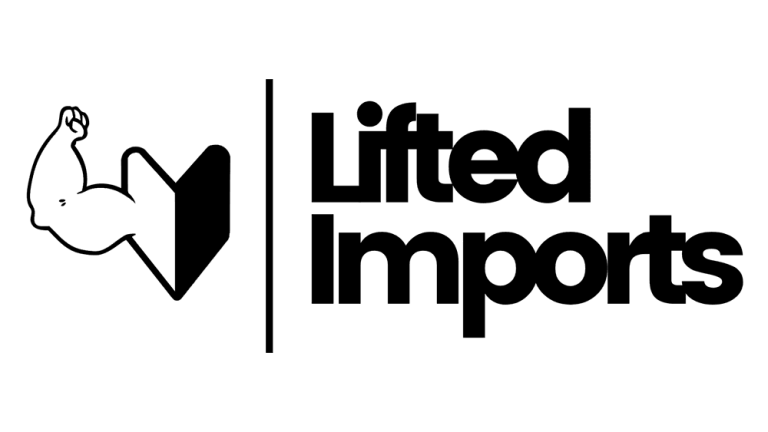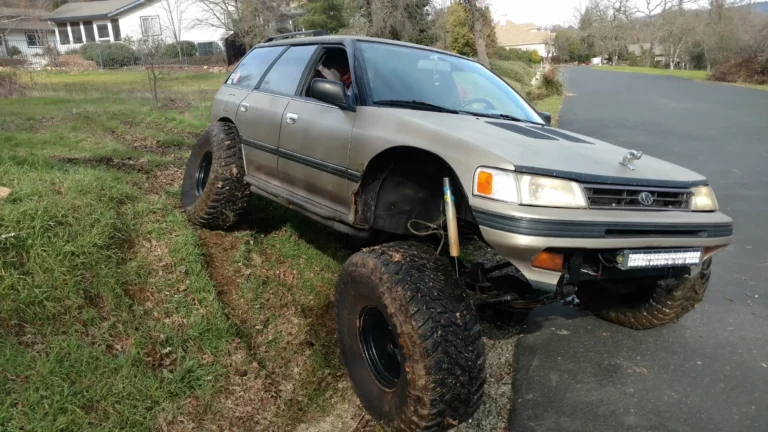
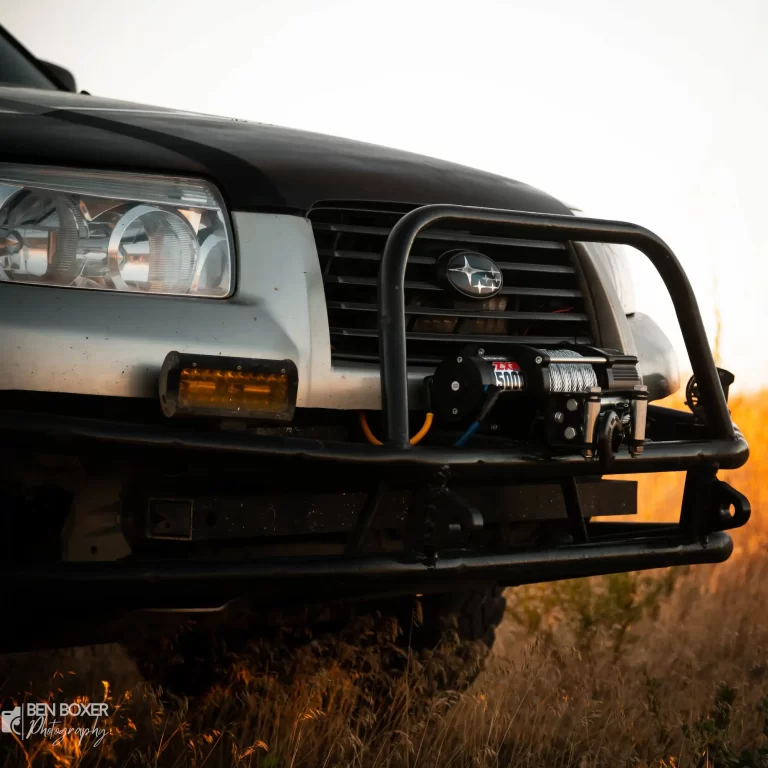
One important tool that can make offroading much easier is a good winch. Being able to quickly self-recover no matter what type of terrain I’m in is convenient and allows me to make the most of my trail days.
However, installing a winch also requires some other considerations. To ensure safe and effective recoveries, you need to equip yourself with some essential accessories:
- Shackles
- A tree saver strap
- Gloves
- A snatch block
- Winch cover
Table of Contents

Shackles
There’s two types of shackles to consider: soft shackles and D-ring shackles. They both have benefits but if I had to only choose one, soft shackles are my favorite. Let’s compare both options.
Soft shackles are a versatile and lightweight alternative to traditional D-ring shackles. Made from high-strength synthetic rope, soft shackles are ideal for various recovery scenarios.
Here are some key benefits:
- Weight: Soft shackles are significantly lighter than their steel counterparts, reducing the load on your vehicle and making them easier to handle.
- Buoyancy: Unlike steel shackles, soft shackles float, preventing them from sinking in mud, snow, or water.
- Versatility: They can fit around a wider range of objects, providing more flexibility in recovery situations.
While soft shackles offer many advantages, D-ring shackles (also referred to sometimes as bow shackles) still have their place in my recovery kit.
D ring shackles are:
- Durable: Made of high-strength steel, D-ring shackles are extremely durable and can handle abrasive situations better than soft shackles.
- Secure: They provide a very solid connection point, especially useful for attaching to recovery points on other vehicles.
Recommendation: Carry both types of shackles. Soft shackles for their versatility and lightweight characteristics, and D-ring shackles for their durability and secure connections.
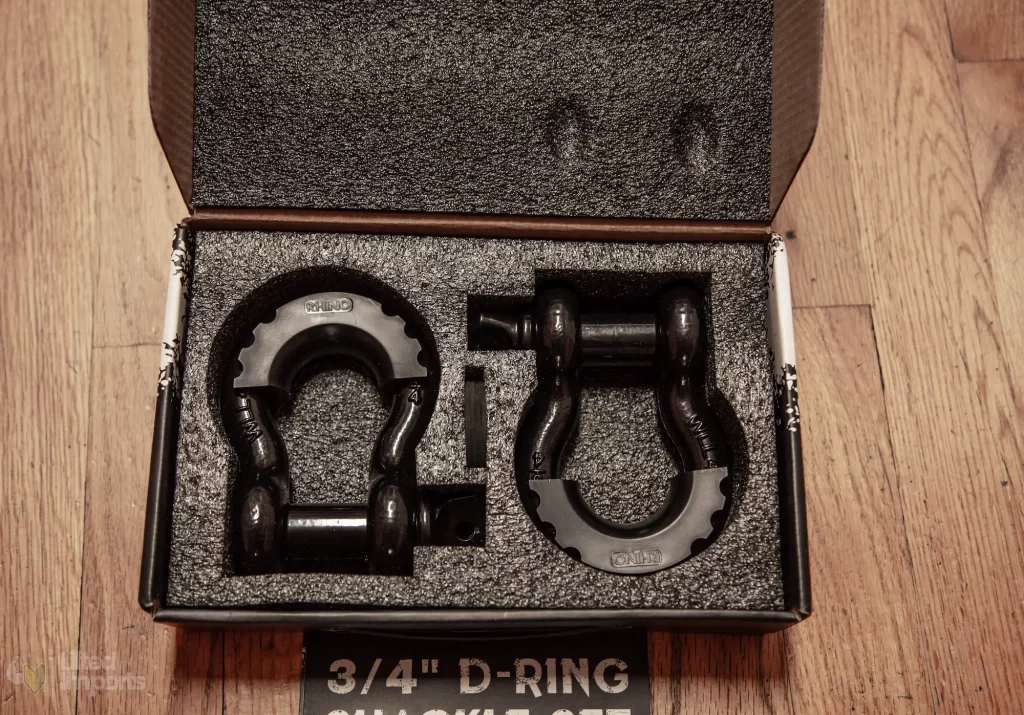
Tree Saver
A tree saver strap is essential for winching when you are planning to recover off of trees or other large objects. They designed to protect trees and provide a reliable anchor point for your winch.
Here’s why you need one:
- Reduced Damage: Wrapping a winch cable directly around a tree can damage the bark and potentially kill the tree. A tree saver strap distributes the load more evenly, preventing damage. Being careful not to destroy the areas that we are allowed to offroad in is important for keeping these places open for our use.
- Secure Anchor Point: Tree saver straps provide a strong and stable anchor point for your winch, ensuring safe and effective recoveries. Wrapping your winch around a tree and hooking it to itself is a very bad idea. It damages your winch line and doesn’t allow you to fully utilize the full pulling power of your winch.
For reference, this is a good quality tree saver strap from Factor 55:

Gloves
When dealing with winches and recovery gear, safety should be your top priority. A sturdy pair of gloves can protect your hands from injuries.
Here’s why gloves are important to use:
- Protection from Burrs: Steel winch cables can develop small burrs that can cut your hands. Even synthetic ropes can cause friction burns.
- Enhanced Grip: Gloves provide better grip, making it easier to handle winch cables and rigging equipment.
- Safety: In heavy-duty recovery situations, protecting your hands and fingers from pinching or crushing is crucial.
My recommendation: Invest in high-quality leather or work gloves. Stores like Harbor Freight, Amazon, or Lowe’s offer good options that honestly don’t cost a lot.
Snatch Block
A snatch block is a pulley-like device that can double the pulling power of your winch and change the direction of the pull without damaging the winch cable. I always keep one of these in my recovery kit.
Here’s how snatch blocks can help your winching capability:
- Increased Pulling Power: By incorporating a snatch block into your recovery setup, you can effectively double the pulling capacity of your winch. For example, a 5,000 lb winch can pull up to 10,000 lbs with a snatch block.
- Versatility: Snatch blocks allow you to redirect the pull of your winch, which can be crucial in tight or challenging recovery situations.
Winch Cover
Protecting your winch from the elements is essential for its longevity and reliability. A winch cover shields your winch from dirt, moisture, and UV rays.
Here’s why you should use a winch cover:
- Corrosion Prevention: Steel cables and winch components can rust and corrode if exposed to moisture. A winch cover helps keep your equipment dry and ready to go in the event that you need to perform a recovery.
- Extended Lifespan: By protecting your winch from environmental damage, you ensure it remains functional and reliable when you need it most. The terminals on your winch motor will be less likely to corrode and cause your winch to malfunction if a cover is used.
My Suggestion: Invest in a durable, weather-resistant winch cover. Keep it on your winch when it’s not in use to protect it from the elements.
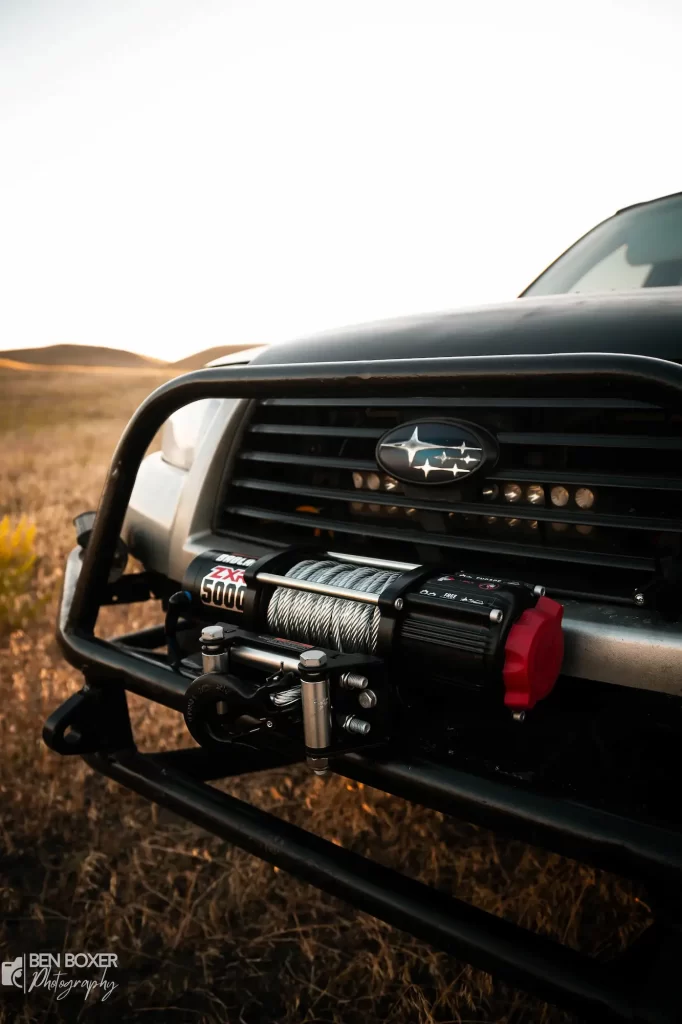
Additional Winch Tips
I’d like to share some extra tips that can help make sure your winch lasts and that your recovery efforts are as safe as possible.
Proper Winch Care
- Avoid Overloading: Know the weight limits of your winch and avoid exceeding them to prevent damage to the winch and cables.
- Regular Maintenance: Inspect your winch line regularly for signs of wear and tear. Replace damaged cables immediately. Keep your winch free from dirt and other debris.
- Correct Spooling: When spooling the winch line, ensure it is done evenly and tightly to prevent tangles and kinks.
Safe Winching Practices
- Use a Winch Dampener: A winch dampener (or blanket) placed over the winch line can absorb energy if the line snaps, reducing the risk of injury. If a blanket is not available, the vehicle behind recovered can keep the hood up to prevent any projectiles from entering through the windshield. But the area should be clear of any spectators regardless of how you choose to perform your recovery.
- Clear Communication: When performing a recovery with others, ensure clear communication to avoid accidents and ensure everyone knows their role.
- Practice: Familiarize yourself with your winch and accessories before you need them in a real-world situation. Practice winching in a controlled environment like your driveway or a local ORV park.
Equipping your Subaru with a winch is a smart move for any off-road enthusiast and I am very glad that I put in the work to install one. However, to ensure safe and effective recoveries, it’s vital to have the right supporting accessories in your kit.
By understanding the function and proper use of each accessory, you can handle almost any recovery situation with confidence. Use your equipment responsibly to protect the trails and ensure the longevity of your gear.
With the right setup, you can tackle challenging terrains, recover from tricky situations, and continue to enjoy the thrill of off-roading with your Subaru.
More Offroad Subaru Articles:
